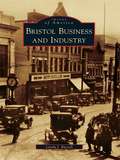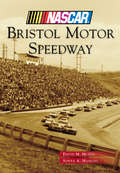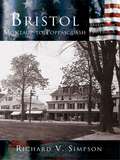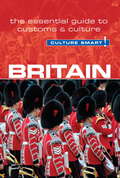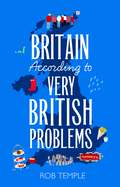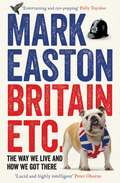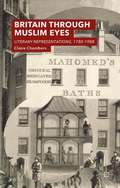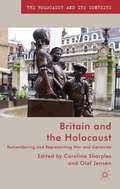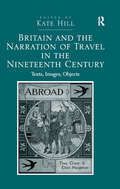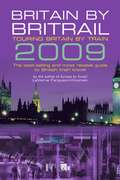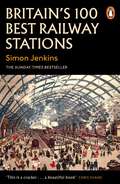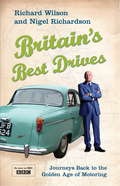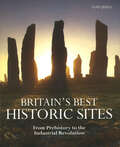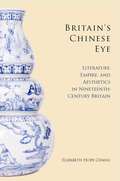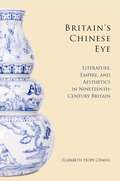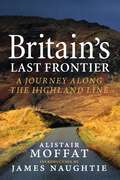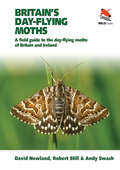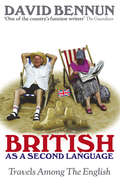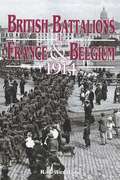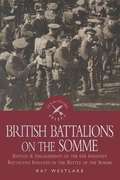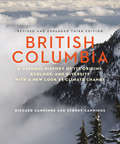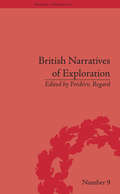- Table View
- List View
Bristol Business and Industry
by Lynda J. RussellBristol was incorporated in 1785 and quickly became recognized as a clock-manufacturing center and home of the E. Ingraham Company's "dollar watch." The town grew with the many immigrant workers who arrived to work for local knitting mills, spring companies, and brass manufacturers. By the 1890s, the strong growth of the town brought an influx of people with different skills who established the Bristol Press, banks, local neighborhood shops and markets, and service industries. In 1920, Bristol Nurseries created new varieties of chrysanthemums that eventually made Bristol known as the "Mum City." Redevelopment in the 1960s brought the new Bristol Plaza and changes on Farmington Avenue. In 1979, ESPN started its first broadcast in its new home on Middle Street. With the completion of the new Route 72, Bristol will today continue to offer new opportunities for business and industry to grow.
Bristol Motor Speedway
by David M. Mcgee Sonya HaskinsWhen Bristol's race track opened in 1961, tickets were often given away to fill the 18,000 seats. Over the years, Bristol Motor Speedway has grown to 160,000 seats and legendary status among race fans. There is a fascination with the unforgettable moments that take place at the track, including rivalries that are hard to miss when fans can watch all the action around the half-mile track no matter where they are seated.
Bristol: Montaup to Poppasquash
by Richard V. SimpsonThe picturesque images and steadfast spirit of small-town America thrive within Bristol. One need only to look along its tree-lined streets and centuries-old waterfront and into its historic homes and buildings to see the romance of Rhode Island's past mingling with its present. Heritage and tradition, especially its long-running celebrations of the Fourth of July, are essential in understanding the character and identity of this little town on the bay.Bristol: Montaup to Poppasquash takes readers on a unique journey through the community's past, beginning with the voyages of early Norse explorers and detailing major events that shaped the town's history, including the King Philip's War, the Revolutionary War, and a variety of other military conflicts that took local men and women away from their homes. Not only evoking memories of yesteryear, this compelling illustrated history explores the evolving personality of Bristol over the passing decades, from its days as a small fishing village and a haven for privateers to its present status as a premier boat-building center.
Britain - Culture Smart!
by Paul NorburyCulture Smart! provides essential information on attitudes, beliefs and behavior in different countries, ensuring that you arrive at your destination aware of basic manners, common courtesies, and sensitive issues. These concise guides tell you what to expect, how to behave, and how to establish a rapport with your hosts. This inside knowledge will enable you to steer clear of embarrassing gaffes and mistakes, feel confident in unfamiliar situations, and develop trust, friendships, and successful business relationships.Culture Smart! offers illuminating insights into the culture and society of a particular country. It will help you to turn your visit-whether on business or for pleasure-into a memorable and enriching experience. Contents include* customs, values, and traditions* historical, religious, and political background* life at home* leisure, social, and cultural life* eating and drinking* dos, don'ts, and taboos* business practices* communication, spoken and unspoken"Culture Smart has come to the rescue of hapless travellers." Sunday Times Travel"... the perfect introduction to the weird, wonderful and downright odd quirks and customs of various countries." Global Travel"...full of fascinating-as well as common-sense-tips to help you avoid embarrassing faux pas." Observer"...as useful as they are entertaining." Easyjet Magazine"...offer glimpses into the psyche of a faraway world." New York Times
Britain According to Very British Problems: the new book from Britain's bestselling humour brand
by Rob TemplePRE-ORDER THE NEW VERY BRITISH PROBLEMS BOOK NOW!Or don't, you know, whatever you want - we don't mind.Very British Problems are what make us so, well, British. And what better place to get to the heart of these problems than, urm, Britain?Starting in Land's End and heading all the way up to John O'Groats, this A-Z tour of Britain covers everything from the national sports of apologising, queueing and bog-snorkelling to our national cuisine of chips, bread rolls and... chips in bread rolls. You'll take in sights such as Stonehenge (see the iconic prop from Spinal Tap in all its glory), Loch Ness (legend has it there is no monster) and Platform 9 ¾ (after a few hours waiting in a railway station, have your photo taken next to a brick wall) all whilst looking for somewhere decent to stop and eat your packed lunch. Britain is a maze of idiosyncrasies, loveable foibles and outright eccentricities and Rob Temple is here to reveal them in all their glory.
Britain According to Very British Problems: the new book from Britain's bestselling humour brand
by Rob TemplePRE-ORDER THE NEW VERY BRITISH PROBLEMS BOOK NOW!Or don't, you know, whatever you want - we don't mind.Very British Problems are what make us so, well, British. And what better place to get to the heart of these problems than, urm, Britain?Starting in Land's End and heading all the way up to John O'Groats, this A-Z tour of Britain covers everything from the national sports of apologising, queueing and bog-snorkelling to our national cuisine of chips, bread rolls and... chips in bread rolls. You'll take in sights such as Stonehenge (see the iconic prop from Spinal Tap in all its glory), Loch Ness (legend has it there is no monster) and Platform 9 ¾ (after a few hours waiting in a railway station, have your photo taken next to a brick wall) all whilst looking for somewhere decent to stop and eat your packed lunch. Britain is a maze of idiosyncrasies, loveable foibles and outright eccentricities and Rob Temple is here to reveal them in all their glory.
Britain Etc.
by Mark EastonMark Easton's The A to Z of Modern Britain looks at the UK through its relationship to 26 subjects - one for each letter of the alphabet. From Alcohol, Beat Bobbies, Cheese and Dogs through Immigration, Justice, Knives and Murder to the Queen, Umbrellas, Vegetables and the Zzzz of a well-deserved rest, the book's meticulously researched but accessible essays map the back-story of contemporary Britain. With each lettered chapter, the reader is invited to look at the United Kingdom in a new way: standing back to see our small islands in a global or historical context, and then diving down to scrutinise vital details that may be overlooked. Taken together, the essays reveal a Britain that cannot be seen through the prism of daily news or current affairs. A park, a wedding, a beggar and a carrot all take on new significance once you have read The A to Z of Modern Britain. As the UK welcomes millions of visitors to its shores for the Olympics and the Diamond Jubilee celebrations, this is a book that offers insight into the psyche of Britain; a nation's obsessions, prejudices, values and idiosyncrasies. What sort of place is it, what are the natives like, and how did we get to where we are?
Britain Through Muslim Eyes
by Claire ChambersWhat did Britain look like to the Muslims who visited and lived in the country in increasing numbers from the late eighteenth century onwards? This book is a literary history of representations of Muslims in Britain from the late eighteenth century to the eve of Salman Rushdie's publication of The Satanic Verses (1988).
Britain and the Holocaust
by Caroline Sharples Olaf JensenHow has Britain understood the Holocaust? This interdisciplinary volume explores popular narratives of the Second World War and cultural representations of the Holocaust from the Nuremberg trials of 1945-6, to the establishment of a national memorial day by the start of the twenty-first century.
Britain and the Narration of Travel in the Nineteenth Century: Texts, Images, Objects
by Kate HillInterrogating the multiple ways in which travel was narrated and mediated, by and in response to, nineteenth-century British travelers, this interdisciplinary collection examines to what extent these accounts drew on and developed existing tropes of travel. The three sections take up personal and intimate narratives that were not necessarily designed for public consumption, tales intended for a popular audience, and accounts that were more clearly linked with discourses and institutions of power, such as imperial processes of conquest and governance. Some narratives focus on the things the travelers carried, such as souvenirs from the battlefields of Britain’s imperial wars, while others show the complexity of Victorian dreams of the exotic. Still others offer a disapproving glimpse of Victorian mores through the eyes of indigenous peoples in contrast to the imperialist vision of British explorers. Swiss hotel registers, guest books, and guidebooks offer insights into the history of tourism, while new photographic technologies, the development of the telegraph system, and train travel transformed the visual, audial, and even the conjugal experience of travel. The contributors attend to issues of gender and ethnicity in essays on women travelers, South African travel narratives, and accounts of China during the Opium Wars, and analyze the influence of fictional travel narratives. Taken together, these essays show how these multiple narratives circulated, cross-fertilised, and reacted to one another to produce new narratives, new objects, and new modes of travel.
Britain by Britrail
by Laverne Ferguson-Kosinski Adam PriceFor nearly thirty years, Britain by BritRail has been the best-selling and most respected guide to the British train system. Newly revised and updated, this time-tested and reader-friendly book is packed with all the information you'll need for hassle-free travel. Learn how to use London, Edinburgh, Glasgow, and Cardiff as base cities for more than forty rail trips and day excursions to outlying areas and points of interest in England, Scotland, and Wales--from the medieval city of York, to Dover and its famous cliffs.
Britain's 100 Best Railway Stations
by Simon JenkinsDiscover the architectural gems that are Britain's 100 Best Railway Stations in this Sunday Times top 10 bestseller'This is a cracker . . . a beautiful book' Chris EvansIt is the scene for our hopeful beginnings and our intended ends, and the timeless experiences of coming and going, meeting, greeting and parting. It is an institution with its own rituals and priests, and a long-neglected aspect of Britain's architecture. And yet so little do we look at the railway station.Simon Jenkins has travelled the length and breadth of Great Britain, from Waterloo to Wemyss Bay, Betws-y-Coed to Beverley, to select his hundred best railway stations. Blending his usual insight and authority with his personal reflections and experiences - including his founding the Railway Heritage Trust - the foremost expert on our national heritage deftly reveals the history, geography, design and significance of each of these glories. Beautifully illustrated with colour photographs throughout, this joyous exploration of our social history shows the station's role in the national imagination; champions the engineers, architects and rival companies that made them possible; and tells the story behind the triumphs and follies of these very British creations. These are the marvellous, often undersung places that link our nation, celebrated like never before.'However spectacular the book's photographs, it's the author's prowess as a phrase-maker that keeps you turning the pages' The Times'An uplifting exploration of our social history' Guardian
Britain's Best Drives
by Nigel Richardson Richard WilsonBack in the fifties, motoring was a liberating experience. Before motorways, traffic jams and road rage, the leisurely Sunday drive could be the highlight of the week. Now, armed with period driving guides, Richard Wilson has packed his picnic, flask and himself into some very stylish vintage cars to retrace six classic routes through the UK and recreate the pleasure of the golden age of motoring for BBC TV.Including the dramatic winding roads of the North Cornwall coast, the lochs and peaks of the Central Highlands and the bronze-age monoliths of the North Yorkshire moors, Richard explores some of the most striking and beautiful scenery and landmarks Britain has to offer. Along the way he meets the people who live there and remember how these places once were, and wonders why things aren't what they used to be.
Britain's Best Drives
by Nigel Richardson Richard WilsonBack in the fifties, motoring was a liberating experience. Before motorways, traffic jams and road rage, the leisurely Sunday drive could be the highlight of the week. Now, armed with period driving guides, Richard Wilson has packed his picnic, flask and himself into some very stylish vintage cars to retrace six classic routes through the UK and recreate the pleasure of the golden age of motoring for BBC TV. Including the dramatic winding roads of the North Cornwall coast, the lochs and peaks of the Central Highlands and the bronze-age monoliths of the North Yorkshire moors, Richard explores some of the most striking and beautiful scenery and landmarks Britain has to offer. Along the way he meets the people who live there and remember how these places once were, and wonders why things aren't what they used to be.
Britain's Best Historic Sites: From Prehistory to the Industrial Revolution
by Tom QuinnA guide to Roman ruins, stone circles, medieval abbeys, and other landmarks of British history—includes color photos and information for travelers.Britain’s Best Historic Sites takes you on a journey around this ancient land, detailing over eighty of the most important and fascinating of Britain’s historic remains from 8000 BC to the twentieth century. From excavations of everyday life found in forgotten highways and Roman villas to areas of great spiritual significance, such as stone circles and medieval churches, as well as sites that were key to the Industrial Revolution, this book uncovers the amazing heritage that can be found across Britain. Featured sites include: Stonehenge, Wiltshire; Castlerigg Stone Circle, Cumbria; Callanish, Isle of Lewis; Fishbourne Roman Palace, West Sussex; Hadrian's Wall, Northumberland; Glastonbury Abbey, Somerset; Lindisfarne, Northumberland; Tower of London, London; Dover Castle, Kent; The George Inn, London; and, Ironbridge, Shropshire.
Britain's Chinese Eye
by Elizabeth Hope ChangThis book traces the intimate connections between Britain and China throughout the nineteenth century and argues for China's central impact on the British visual imagination. Chang brings together an unusual group of primary sources to investigate how nineteenth-century Britons looked at and represented Chinese people, places, and things, and how, in the process, ethnographic, geographic, and aesthetic representations of China shaped British writers' and artists' vision of their own lives and experiences. For many Britons, China was much more than a geographical location; it was also a way of seeing and being seen that could be either embraced as creative inspiration or rejected as contagious influence. In both cases, the idea of China's visual difference stood in negative contrast to Britain's evolving sense of the visual and literary real. To better grasp what Romantic and Victorian writers, artists, and architects were doing at home, we must also understand the foreign "objects" found in their midst and what they were looking at abroad.
Britain's Chinese Eye: Literature, Empire, and Aesthetics in Nineteenth-Century Britain
by Elizabeth Hope ChangThis book traces the intimate connections between Britain and China throughout the nineteenth century and argues for China's central impact on the British visual imagination.
Britain's Last Frontier: A Journey Along the Highland Line
by Alistair MoffatA Scottish historian travels along the cultural and geographical border of the Highlands in this &“seductive travelogue&” (Scottish Field). Running from the northeast to the southwest of Scotland, the Highland Line is the most profound internal boundary in Britain. First recognized by the Roman general Agricola in the first century AD, it divides the country in many senses—signaling the border between Highland and Lowland; Celtic and English-speaking; crofting and farming. In Britain's Last Frontier Alistair Moffat makes a journey of the imagination, tracing the route of the Line from the River Clyde through Perthshire and the North-east. In addition to exploring the huge importance of the Line over almost two thousand years, he also shows how it continues to influence life and attitudes in 21st-century Scotland. The result is a fascinating book full of history and anecdote.
Britain’s Day-flying Moths
by David Newland Robert Still Andy Swash Mark ParsonsThis concise photographic field guide will help you identify any of the 100 or so day-flying moths found in Britain and Ireland. Combining stunning photographs, authoritative text, and an easy-to-use design, this book makes a perfect traveling companion--one that will increase your enjoyment of these colorful and intriguing creatures. Like butterflies, some moths fly regularly in sunshine, whereas others that usually fly only at night are readily disturbed from their resting places during the day. This guide describes all of these species, with at least one photograph of each in its natural, resting pose. The text includes a brief description of each moth, with details of its life history, where and when to look for it, its status, the food plants of its caterpillars, and its special features. Introductory sections cover many topics, including how to distinguish moths from butterflies; classification; life cycle and behavior; ecological importance; the impact of habitat and climate change; recording and monitoring; and conservation.Individual accounts for some 100 species Stunning photographs of every moth, as you see them Attractive, easy-to-use, and accessible design
Britannia in Brief: The Scoop on All Things British
by Leslie Banker William MullinsFor travelers and anglophiles alike, this roundup of vital British culture is all at once clever, entertaining, and thoroughly useful.
British As A Second Language
by David BennunDavid Bennun had lived in Africa his whole life. At the age of 18 he came to Britain, the mother country. The country he had read about in Punch magazine or seen in films like Chariots of Fire. He was in for a shock. A very big shock indeed: 'I could not have been less prepared had I spent my life up to that point listening to 30-year-old broadcasts of the Light Programme.'In this timely follow-up to the critically acclaimed Tick Bite Fever, David Bennun shows us our own country through the eyes of an alien. With his brilliantly witty turn of phrase we follow his life as a student, his brushes with Bohemia, his troubles renting and buying property, his discovery of British food and his horrors at entering the world of work. From DIY to architecture, sport to alcohol, transport to music and entertainment, David Bennun brilliantly and with ruthless wit deconstructs all these subjects, many of them so dear to the British heart.
British Battalions in France & Belgium, 1914: 1914
by Ray WestlakeA unique account of the 143 infantry battalions of the British Army that served in France and Belgium from August to the end of December, 1914, during WWI.Ray Westlake has painstakingly compiled a comprehensive compendium of the exact movements of every regiment involved on the various battlefields in France and Flanders during World War One. Detailed records of movements, both in and out of battle areas and on a day-by-day basis, are covered in the same meticulous style as the author’s previous books, British Battalions on the Somme and British Regiments at Gallipoli.
British Battalions on the Somme: Battles & Engagements of the 616 Infantry Battalions Involved in the Battle of the Somme
by Ray WestlakeAn account of the infantry battalions belonging to regiments of the British Army and the 63rd (Royal Naval Division) during their service in the Somme area.Although seventy-eight years have passed since the Battle of the Somme was fought, interest in this, the bloodiest battle of the First World War, has never waned. Ray Westlake has collated all the information so painstakingly gathered, to produce a comprehensive compendium of the exact movements of every battalion involved in the battle. This book is invaluable not only to researchers but to all those visiting the battlefield and anxious to trace the movements of their forebears.
British Columbia
by Richard Cannings Sydney CanningsThis revised and expanded edition of an award-winning book not only explores British Columbia's stunning ecology but also features an increased focus on climate change. With expanded sections on the province's geological history, updated information on the mountain pine beetle and the future of B.C.'s biodiversity, and fresh information on many other topics, this edition includes new illustrations, photos, sidebars, and new and revised maps.Both an authoritative reference and an easy-to-read guide, this revised edition is a must for anyone who wants detailed and up-to-date information about British Columbia's dazzling natural world.
British Narratives of Exploration: Case Studies on the Self and Other (Empires in Perspective #9)
by Frederic RegardFeatures a collection of essays that focus on British travel narratives from the seventeenth through to the nineteenth centuries. This work investigates how the early explorers' sense of self was destabilised by encounters with the Other.
